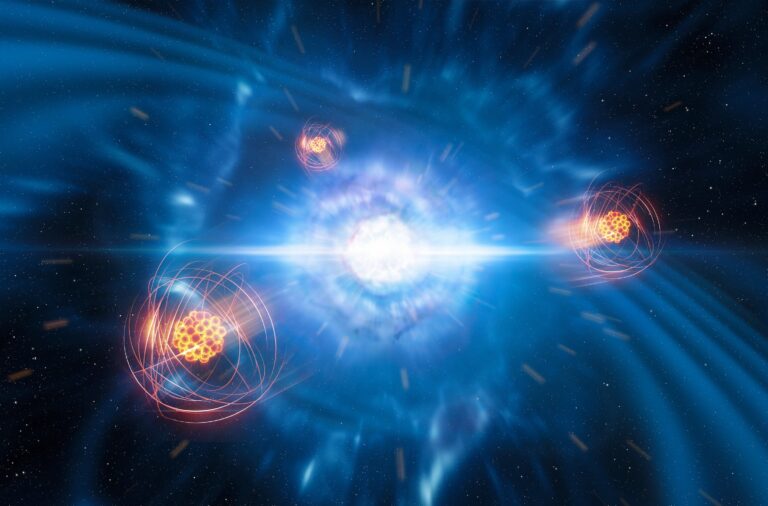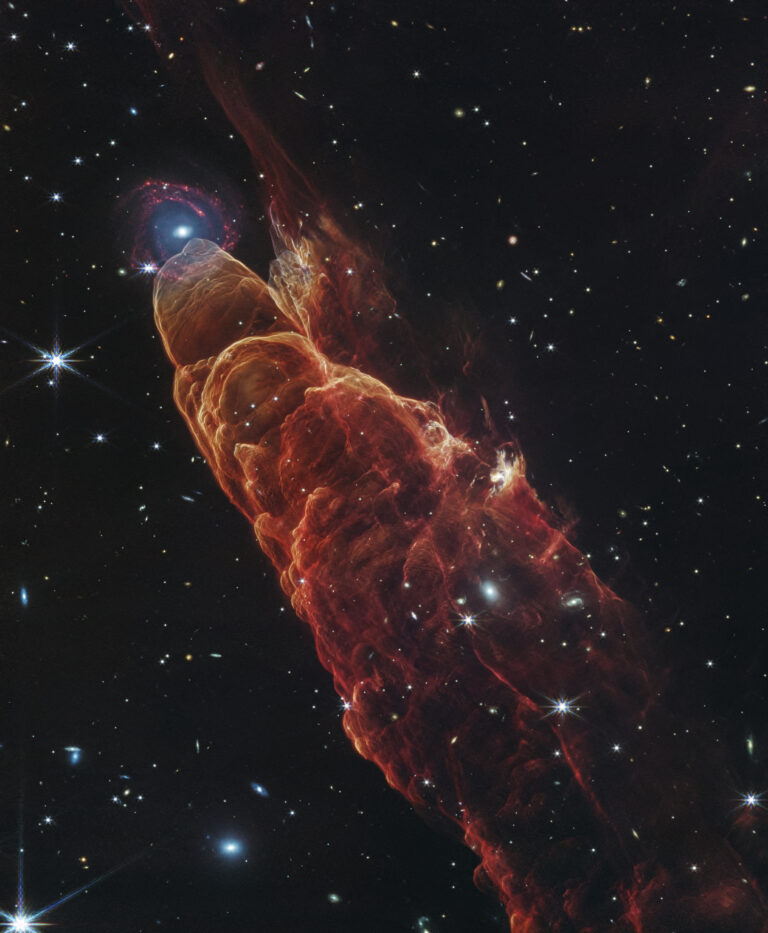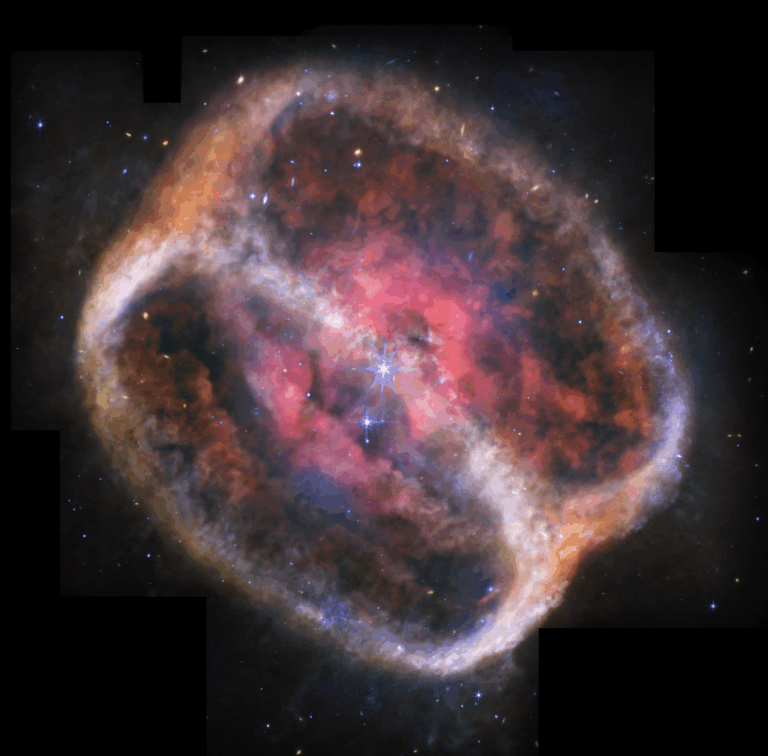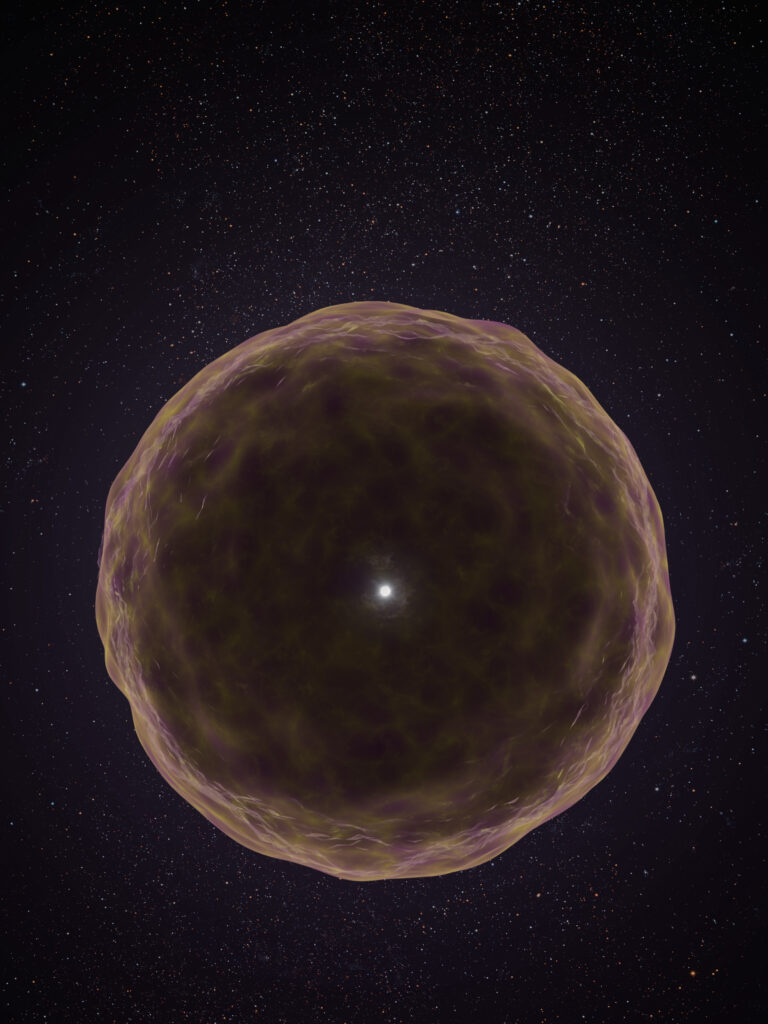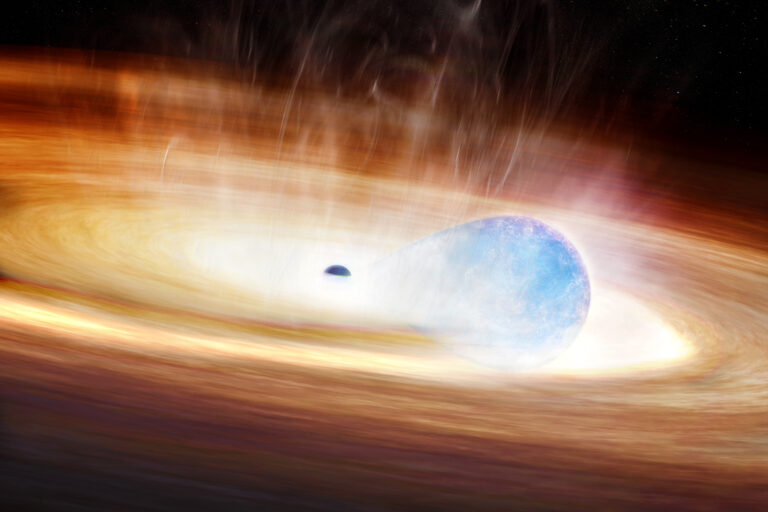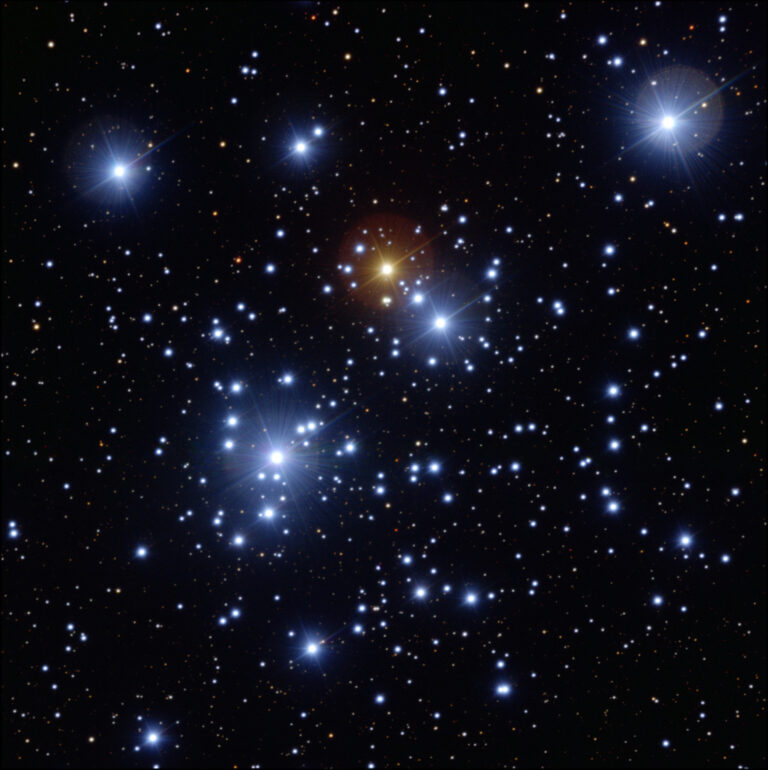Key Takeaways:
NASA’s Hubble Space Telescope image of the star-filled globular cluster NGC 2031 is furthering scientists’ understanding of “stellar contamination,” or possibly a rejuvenated class of stars called “blue stragglers.”
Located in the Large Magellanic Cloud (LMC) in the constellation Mensa the Table Mountain, NGC 2031, like all globulars, displays a spherical shape due to long-term mutual gravitational interactions between many old stars. Astronomers often have difficulty measuring the distances to the cluster’s stars because the density of the LMC region it’s located in results in what is known as stellar contamination — where the atmospheres and surface features of the cluster’s tightly packed stars interfere with observations.
According to a NASA release, contamination could explain why NGC 2031 displays so many bright blue stars near its core (pictured at the top left corner of the image above). These bluer stars are somewhat out-of-place in a globular cluster because they typically burn hot and die young, while most globulars are home to much older red stars.
But another possible explanation for the blue stars in this globular is that they are a type of star known as a blue straggler. These second-chance stars are thought to be the result of two older red stars merging. The combined mass of the resulting star makes it burn more intensely, giving it a young look that seems out of place in a globular cluster. Hubble previously found potential evidence for such stars in a different cluster, 47 Tucanae.
While NGC 2031 is relatively cramped and hard to study for a globular cluster, based on the region’s 14 Cepheid variable stars — stars that brighten then dim in regular periods — astronomers were able to pin down the clusters distance to about 150,000 light-years. The cluster is just 140 million years old and holds some 3,000 times the mass of the Sun.





